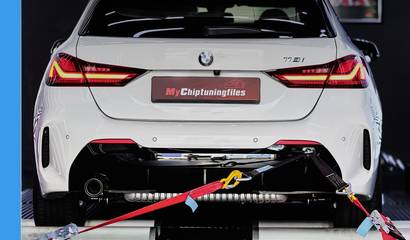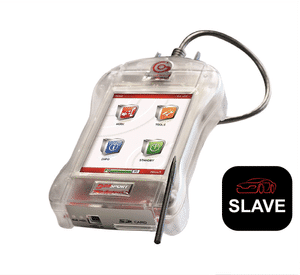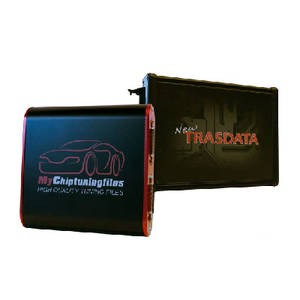Sunday 16 November

If you love small, fun-to-drive cars, then the suzuki cappuccino is a name you need to know. This little kei car from the 1990s may be tiny, but it’s got the spirit of a true sports car. Whether you’re looking for a suzuki cappuccino for sale, curious about how it stacks up against the suzuki cappuccino vs miata, or just want to know more about its performance, you’re in the right place.
Let’s break down everything you need to know about this quirky, lightweight roadster, from the suzuki cappuccino specs and suzuki cappuccino engine to its suzuki cappuccino top speed and suzuki cappuccino mpg. If you’ve ever wondered why this car has such a cult following, you’re about to find out.
A Quick History of the Suzuki Cappuccino
The suzuki cappuccino was built between 1991 and 1998 as part of Japan’s kei car segment—small, lightweight cars designed for city driving with strict engine size and weight regulations. But unlike most kei cars, the suzuki cappuccino wasn’t just about fuel efficiency and practicality. It was a rear-wheel-drive, turbocharged sports car that delivered a surprisingly exciting driving experience.
The Cappuccino was Suzuki’s answer to the Mazda Miata and Honda Beat, and it quickly gained a cult following. Even today, it remains one of the most desirable kei sports cars, with enthusiasts around the world hunting for a suzuki cappuccino for sale in the USA or importing one from Japan.
Suzuki Cappuccino Specs: What’s Under the Hood?
Despite its tiny size, the suzuki cappuccino specs show that this little roadster was built for pure driving fun. Everything about it screams lightweight performance, from the compact suzuki cappuccino engine to the rear-wheel-drive layout.
Under the hood, you’ll find a 657cc turbocharged three-cylinder suzuki cappuccino engine, which might sound small, but thanks to the turbo, it packs a punch. It produces 63 horsepower, which doesn’t seem like much, but in a car that weighs just 1,600 lbs (725 kg), it’s more than enough to have fun.
The suzuki cappuccino 0-60 time is around 8.5 to 9 seconds, which is surprisingly quick for a kei car. It’s paired with a 5-speed manual transmission, although some later models came with a 3-speed automatic (but let’s be honest, the manual is the one you want).
Being a kei car, it was limited by regulations, so the suzuki cappuccino top speed is capped at 85-90 mph. However, many owners remove the limiter, allowing it to go beyond 100 mph with some simple mods.
One of the most impressive things is the suzuki cappuccino mpg, which is around 40 mpg. Even by today’s standards, that’s incredible fuel economy, making it not just a fun car but also one you can drive without worrying too much about gas costs.
For a car designed under strict kei car rules, the suzuki cappuccino specs prove that you don’t need big suzuki cappuccino horsepower to have a thrilling driving experience.
Read More: USED CARS FOR SALE IN USA: WHERE TO FIND THE BEST DEALS
Suzuki Cappuccino Interior: Small But Functional
Step inside the suzuki cappuccino interior, and you’ll immediately see that everything was designed with purpose. This isn’t a luxury grand tourer—it’s a tiny, driver-focused sports car, and it feels like one the moment you get in.
The first thing you’ll notice is how compact it is. There’s only room for two seats, and storage space is almost nonexistent. If you’re tall, you might feel a little cramped, but for an average-sized driver, it’s surprisingly comfortable.
The dashboard features simple analog gauges with a classic 90s feel, giving you everything you need without distractions. There’s a basic climate control system and a standard radio, but don’t expect anything fancy like touchscreen infotainment or high-end materials.
Some models came with leather seats and minor luxury touches, but overall, the suzuki cappuccino interior is pretty minimalistic. The focus here is on driving, not comfort.
One of the coolest features is the removable roof. The suzuki cappuccino interior has a unique three-piece roof design, allowing you to configure it as a coupe, targa, or full convertible. You can remove the roof panels for an open-top experience while keeping the rear window in place, or you can take it all off and enjoy the full convertible feel.
It’s small, basic, and not the most practical, but the suzuki cappuccino interior fits the car’s personality perfectly. It’s all about having fun behind the wheel, and that’s exactly what it delivers.
Suzuki Cappuccino Price: How Much Does It Cost?
The Suzuki Cappuccino is a rare and distinctive kei car that has garnered attention among enthusiasts and collectors. Its pricing varies significantly based on factors such as condition, mileage, and location.
Pricing Overview:
- Japan: In its home country, well-maintained units with over 100,000 kilometers typically range from $6,000 to $10,000. (Car From Japan)
- United States: Due to import regulations and the car's rarity, prices are generally higher. Listings often span from $12,995 to $24,888, with an average around $19,596.
(Autotrader Classics) - United Kingdom: At its 1993 launch, the Cappuccino was priced at £11,995. Currently, prices vary based on condition and mileage.
(https://jdmexport.com)
Factors Influencing Price:
- Condition: Vehicles in excellent condition with low mileage command higher prices.
- Modifications: Original, unmodified cars are often more valuable to collectors.
- Location: Import costs and regional demand can significantly affect pricing.
Where to Find Listings:
- Japan-Based Exporters: Platforms like Goo-net Exchange offer a variety of listings.
(Goo-net Exchange) - U.S. Classic Car Dealers: Websites such as ClassicCars.com and Hemmings feature Cappuccinos, with prices starting around $15,500.
(Classic Cars, Hemmings) - JDM Import Specialists: Sites like JDMBuySell aggregate listings from multiple importers, providing a comprehensive view of available vehicles.(JDM Buy Sell)
Considerations Before Purchasing:
- Import Regulations: Ensure compliance with local laws regarding vehicle imports, especially in countries with strict regulations.
- Parts Availability: Given its age and limited production, sourcing parts may be challenging.
- Right-Hand Drive: Most Cappuccinos are right-hand drive, which may require adaptation for drivers accustomed to left-hand drive vehicles.
All in all, acquiring a Suzuki Cappuccino can be a rewarding experience for enthusiasts seeking a unique driving experience. However, potential buyers should conduct thorough research and consider all factors to ensure a satisfactory purchase.
Suzuki Cappuccino Top Speed: How Fast Can It Go?
The suzuki cappuccino top speed is officially limited to 85 mph, thanks to Japan’s kei car regulations. But don’t let that number fool you—this little roadster can be much faster with a few simple modifications.
While the stock suzuki cappuccino engine is small, it’s capable of a lot more than what the factory setup allows. Many owners remove the speed limiter, and with basic upgrades like a better exhaust, ECU tune, and intake, the suzuki cappuccino top speed can easily hit 100+ mph. Some enthusiasts have even swapped in bigger turbos or upgraded the internals to push the power well beyond the stock suzuki cappuccino horsepower.
Even in stock form, the suzuki cappuccino feels quick and lively thanks to its lightweight frame. The turbocharger gives it an extra kick, making it feel much faster than it actually is. While it won’t win any drag races against bigger cars, it shines in tight, twisty roads where its agility and handling make up for its lower suzuki cappuccino top speed.
So, while it might not have the high-speed capability of larger sports cars, the suzuki cappuccino delivers all the fun you could ask for, even within its limited suzuki cappuccino top speed. And if you’re willing to modify it, you can easily push it well beyond its factory limits.
Should You Buy a Suzuki Cappuccino?
If you’re looking for something fun, unique, and packed with character, the suzuki cappuccino is an awesome choice. It’s not your typical sports car, but that’s exactly what makes it special. This little kei car is lightweight, turbocharged, and built for pure driving enjoyment. But is it the right car for you? Let’s break it down.
What Makes the Suzuki Cappuccino Great?
First off, it’s ridiculously fun to drive. Weighing just around 1,600 lbs, it feels like a go-kart on the road. The turbocharged suzuki cappuccino engine might only make 63 horsepower, but because of its size, it still feels zippy. Plus, the fuel economy is incredible, with the suzuki cappuccino mpg sitting around 40 mpg. Another cool feature? The removable roof. You can drive it as a coupe, a targa, or a full convertible. It’s also more affordable than many other JDM icons like the Skyline or RX-7.
What Are the Downsides?
It’s tiny—really tiny. If you’re tall, getting comfortable might be a challenge. Since it was never officially sold in many countries, parts can be tricky to find. It’s also not super fast, so if straight-line speed is your thing, this might not be the best choice. And for most people outside Japan, it’s right-hand drive, which takes some getting used to.
That said, if you love quirky JDM cars and don’t mind its size, the suzuki cappuccino is an absolute blast to own and drive.
Read More: Comparing Chiptuning vs. Hardware Upgrades: Which is Better?
Suzuki Cappuccino vs Miata: How Does It Compare?
If you're into small, lightweight roadsters, there's a good chance you've wondered about suzuki cappuccino vs miata. Both are fun, rear-wheel-drive convertibles that focus on driving enjoyment over outright power, but they’re actually very different cars. While the Miata (or MX-5) is well-known around the world, the suzuki cappuccino is more of a hidden gem outside Japan. So, how do they really compare? Let’s break it down.
Size and Weight: Just How Small Is the Cappuccino?
One of the biggest differences between the two is size and weight. The suzuki cappuccino weight is just 1,600 lbs (725 kg), making it one of the lightest sports cars ever made. In comparison, the first-generation Miata (NA) weighs about 2,100 lbs (950 kg), meaning it’s nearly 500 lbs heavier.
To put that into perspective:
- The suzuki cappuccino size comparison shows that it's 10.5 feet long, making it about 2.5 feet shorter than the Miata, which comes in at around 13 feet.
- The Cappuccino is so tiny that it almost looks like a toy car next to the Miata, which is already considered a small car.
- Its narrower width and shorter wheelbase make it feel even more compact, perfect for tight city streets but a little twitchy at high speeds.
This ultra-lightweight design means that even with its tiny engine, the Cappuccino still feels zippy and agile. In contrast, the Miata's extra size and weight give it a more stable, planted feel, especially at highway speeds.
Engine and Performance: Turbo Kei vs Naturally Aspirated Four-Cylinder
The biggest mechanical difference between the two is their engines. The suzuki cappuccino engine is a tiny 657cc three-cylinder turbocharged unit, producing 63 horsepower, which is the legal limit for kei cars in Japan.
Meanwhile, the Miata offers a much larger 1.6L or 1.8L four-cylinder, making anywhere from 116 to 133 horsepower, depending on the model year. That’s almost double the power of the Cappuccino.
Suzuki Cappuccino 0-60 vs Miata 0-60
- The suzuki cappuccino 0-60 mph time is around 8.5-9 seconds, which is surprisingly quick for such a small engine.
- The Miata’s 0-60 time is closer to 8 seconds with the 1.6L engine and around 7 seconds with the 1.8L engine.
The Miata is definitely faster, but the Cappuccino holds its own, especially in the low-speed twisty roads it was designed for. The turbocharger in the Cappuccino adds a unique character, giving it a punchy mid-range and a boosty feel that the naturally aspirated Miata doesn’t have.
However, the Miata’s larger engine means more torque, so it pulls harder out of corners and feels less stressed at highway speeds. The Cappuccino, on the other hand, needs to be revved out and relies on its lightweight frame to keep up.
Driving Experience: Raw and Quirky vs Balanced and Refined
This is where the biggest difference comes in—how these cars feel to drive.
- The Miata is more balanced, with better overall stability and more predictable handling.
- The Cappuccino feels raw, almost like a go-kart with a turbo. It’s twitchier, but also more engaging because of how small and light it is.
Read More: A COMPREHENSIVE GUIDE TO CHIP TUNING TOOLS FOR BUSINESSES
Miata: The Perfectly Balanced Roadster
The Miata was designed from day one as a full-size roadster, just on a small scale. This means it feels planted and confidence-inspiring in corners. The steering is precise, the chassis is well-tuned, and there’s enough power to have fun without being overwhelming.
It’s also a more practical car, with a more comfortable interior, better ride quality, and an easier time on highways. If you want an everyday sports car, the Miata is a better choice.
Cappuccino: A Turbocharged Go-Kart on the Streets
The suzuki cappuccino is more extreme. Because it’s so light and compact, everything feels exaggerated—the steering is sharp, the acceleration feels quicker than it actually is, and the turbo gives it an addictive little boost.
However, this also means it’s less stable at high speeds, and its tiny size makes it feel more like a track toy than a real car. It’s more engaging in tight, twisty roads, but less confidence-inspiring on highways or long drives.
Which One Should You Choose?
Both the suzuki cappuccino and Miata are incredibly fun, but which one is right for you?
Pick the Miata if:
- You want more power and better highway performance.
- You need a more practical, comfortable roadster.
- You want a car that’s easy to find parts for.
- You’re looking for something that’s more stable and forgiving.
Pick the Cappuccino if:
- You want a truly unique, quirky JDM experience.
- You love lightweight, turbocharged cars with go-kart handling.
- You don’t mind a smaller, more extreme driving feel.
- You want something rare and head-turning.
If you’re looking for a fast, reliable, well-rounded roadster, the Miata is the smarter choice. But if you want something quirky, rare, and full of personality, the suzuki cappuccino is hard to beat.
At the end of the day, both cars are about having fun behind the wheel, and either one will put a huge smile on your face.
Get the Best Out of Your Car with MyChiptuningfiles
Ever feel like your car could do more? With MyChiptuningfiles, you can unlock hidden power, improve fuel efficiency, and enjoy a smoother drive—all with a simple ECU tune.
We use advanced tools like WinOLS to create high-quality tuning files customized for your vehicle. Whether you want more horsepower for a thrilling ride or better fuel economy for long trips, we provide safe, reliable, and effective solutions.
Getting started is easy. Just upload your file, and our experts will handle the rest. If you're thinking about starting a chiptuning business, contact us—we provide the expertise and tools to help you succeed.
With years of experience in ECU remapping, we ensure your car performs at its absolute best. Why settle for average when your car is capable of so much more? Upload your file today and experience the difference with MyChiptuningfiles!
To Wrap Up
The suzuki cappuccino isn’t just another small car—it’s a proper driver’s car wrapped in a compact, lightweight package. Whether you’re actively looking for a suzuki cappuccino for sale or just admiring it from a distance, there’s no denying the unique charm this little kei sports car brings. It was designed for pure driving enjoyment, and even decades after its release, it still delivers.
One of the most impressive things about the suzuki cappuccino is how it captures the essence of a true sports car despite its tiny footprint. Weighing just around 1,600 lbs, it’s actually lighter than some motorcycles, yet it offers a well-balanced, rear-wheel-drive setup with a turbocharged suzuki cappuccino engine. The driving experience is raw, engaging, and filled with personality. Every turn of the wheel, every shift of the five-speed manual, and every burst of turbo boost makes you feel completely connected to the road.
Another huge plus is its affordability compared to other JDM legends. While prices have been rising, the suzuki cappuccino price is still significantly lower than other collector cars from the 90s like the RX-7 or Skyline. And unlike those bigger, more expensive cars, the Cappuccino delivers fun at legal speeds, meaning you don’t need a racetrack to enjoy it.
If you ever get the chance to drive one, take it. If you have the opportunity to own one, don’t hesitate. The suzuki cappuccino might be small, but it leaves a lasting impression that few cars can match.
news.related_news
Chiptuning tools
Whether you own a car, truck or tractor: we have the best equipment and software for tuning your petrol and diesel engine. With our chiptuning tools it is possible to easily read out the original engine software of your vehicle and upload it to our website. And then it's up to us to provide you with high-quality and customized chip tuning files. Curious about our range of chiptuning tools? Check it out via the button below!









